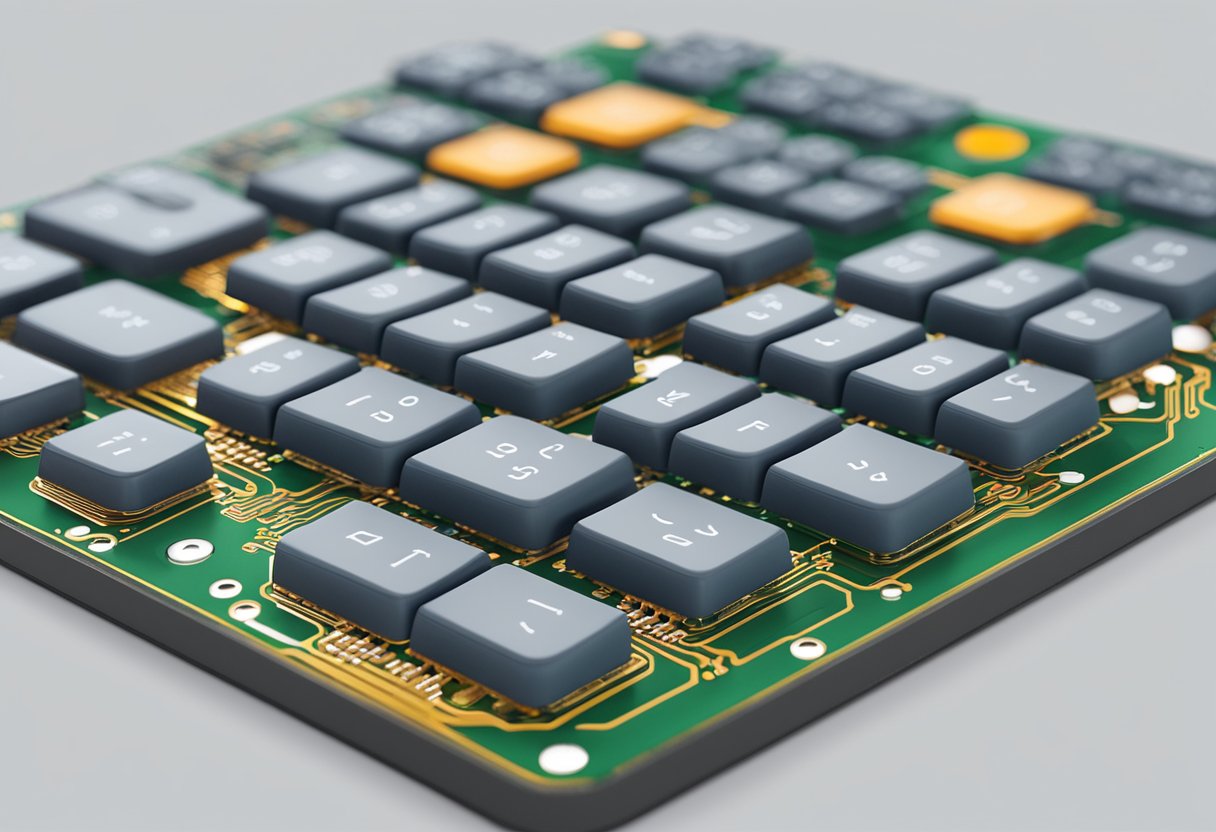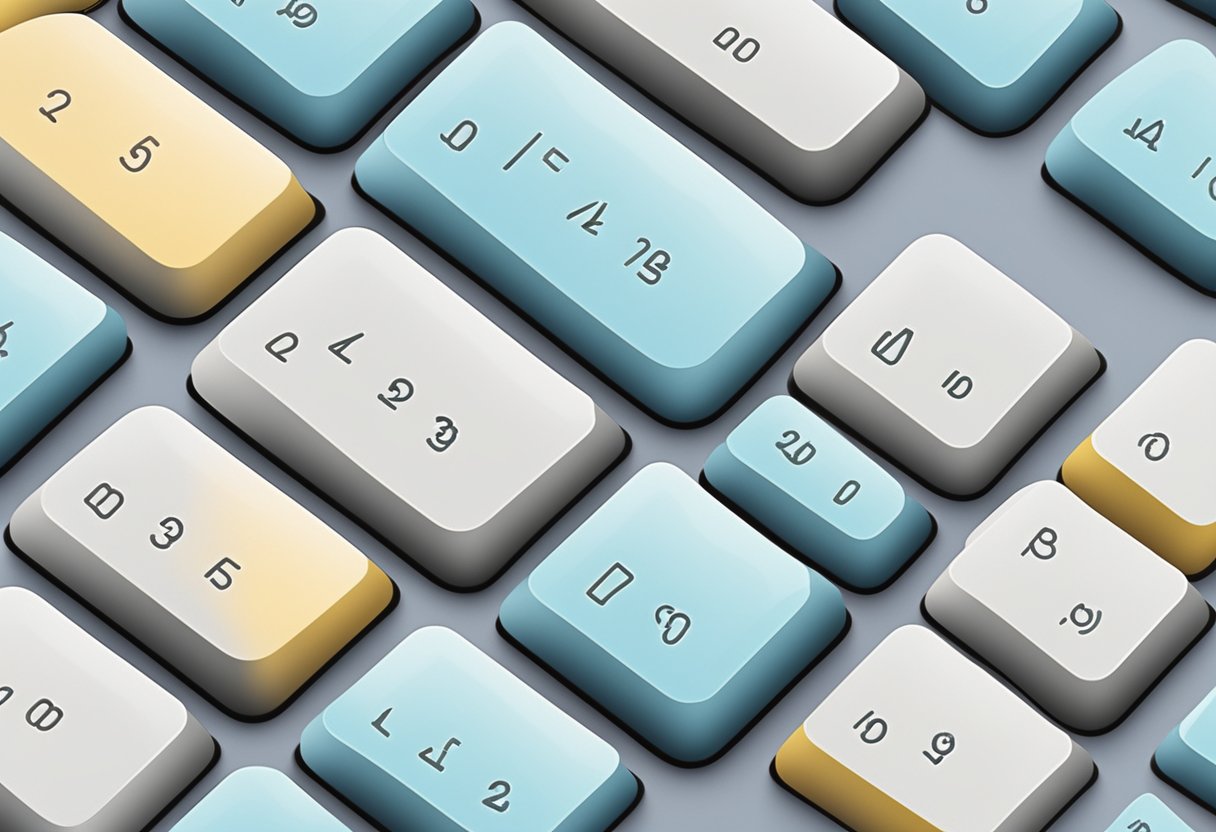Contact
Write to Us And We Would Be Happy to Advise You.
Do you have any questions, or would you like to speak directly with a representative?
By peter
If you are looking for a simple and cost-effective way to input data into your electronic project, a 4×3 membrane keypad might be just what you need. This type of keypad is easy to use and can be purchased for a relatively low price. It is also compact and can fit easily into your project’s design.

A 4×3 membrane keypad is a type of keypad that consists of 12 buttons arranged in a 4×3 matrix. Each button has a conductive pad on the underside, which makes contact with a corresponding pad on the circuit board when the button is pressed. This creates a connection that can be detected by your project’s microcontroller, allowing you to register button presses and use them to control your project.

A 4×3 membrane keypad is a type of input device that allows you to send signals to a microcontroller or other electronic device. It consists of a thin, flexible membrane that contains conductive traces and contact pads, which are pressed together when a key is pressed. The conductive traces are connected to pins on the keypad, which can be read by a microcontroller to determine which key was pressed.
The 4×3 designation refers to the number of keys on the keypad. In this case, there are 12 keys arranged in a 4×3 matrix. Each key corresponds to a unique combination of row and column pins, which allows the microcontroller to determine which key was pressed based on which pins are connected.
One advantage of a membrane keypad is its low profile, which makes it ideal for use in applications where space is limited. Additionally, membrane keypads are durable and resistant to moisture and dust, which makes them suitable for use in harsh environments.
Overall, a 4×3 membrane keypad is a versatile input device that can be used in a wide range of applications, from consumer electronics to industrial control systems. Its low profile, durability, and resistance to environmental factors make it a popular choice for many designers and engineers.

A 4×3 membrane keypad consists of 12 keys arranged in a matrix of 4 rows and 3 columns. Each key is assigned to a certain row and column, forming a unique combination that corresponds to a specific input. The keys are usually labeled with numbers, letters, or symbols to indicate their function. The layout of the keys can be customized to suit the specific needs of the user.
The circuit of a 4×3 membrane keypad is simple and easy to understand. It consists of a matrix of 4 rows and 3 columns, with each key connected to a specific intersection of a row and a column. When a key is pressed, it creates a connection between the corresponding row and column, which is detected by the microcontroller or other input device connected to the keypad. The circuit can be designed using a variety of components, including resistors, capacitors, diodes, and transistors.
The membrane keypad is made of a thin, flexible material that is printed with conductive ink. The material is usually polyester or polycarbonate, which is durable and resistant to wear and tear. The conductive ink is used to create the circuit connections between the keys and the microcontroller. The keypad is enclosed in a protective casing, which can be made of plastic or metal depending on the application. The casing provides additional durability and protection against environmental factors such as humidity, dust, and temperature changes.
In summary, the 4×3 membrane keypad is a simple and versatile input device that can be used in a wide range of applications. Its design and structure allow for easy customization and integration into various circuits and systems. The key layout, circuit design, and material composition are all important factors to consider when designing and using a membrane keypad.
A 4×3 membrane keypad is a type of input device that allows you to enter data into a system by pressing buttons. It consists of a thin, flexible membrane that contains conductive traces and contact pads. When a button is pressed, it makes contact with the conductive trace, completing the circuit and sending a signal to the system.
Each button on a 4×3 membrane keypad has a unique combination of row and column contacts. When a button is pressed, the conductive traces on the membrane make contact with each other, completing the circuit and sending a signal to the system. The keys are usually made of a soft rubber material that provides tactile feedback when pressed, giving the user an indication that the button has been activated.
The electrical interface of a 4×3 membrane keypad typically consists of a ribbon cable with a connector that plugs into a circuit board. The circuit board contains a microcontroller that scans the keypad for button presses and sends the corresponding signals to the system. The microcontroller can be programmed to recognize different button combinations and perform different actions based on those combinations.
When a button is pressed on a 4×3 membrane keypad, it typically provides tactile feedback in the form of a soft click or a slight depression. This feedback gives the user an indication that the button has been activated and helps prevent accidental button presses. The system also provides feedback in the form of visual or audible cues, such as a beep or a flashing light, to indicate that the input has been recognized.
In summary, a 4×3 membrane keypad is a simple and reliable input device that can be used in a variety of applications. Its key press mechanism, electrical interface, and feedback and response features make it an ideal choice for applications that require precise and reliable data entry.
4×3 membrane keypads are versatile input devices that can be used in a wide range of applications. They are affordable, easy to use, and reliable. In this section, we will explore the most common applications of 4×3 membrane keypads.
4×3 membrane keypads are commonly used in industrial control systems. They are used to control machines, monitor processes, and input data. They are ideal for harsh environments because they are resistant to dust, moisture, and chemicals. They are also easy to clean and maintain.
4×3 membrane keypads are also used in consumer electronics. They are used in remote controls, calculators, and other devices that require input from the user. They are ideal for small devices because they are compact and lightweight. They are also easy to integrate into a device’s design.
4×3 membrane keypads are used in access systems to control entry into buildings, rooms, or other secure areas. They are used in combination with other security devices such as cameras and alarms to provide a high level of security. They are ideal for access systems because they are durable and reliable.
In summary, 4×3 membrane keypads are versatile input devices that can be used in a wide range of applications. They are affordable, easy to use, and reliable. They are commonly used in industrial control systems, consumer electronics, and access systems.
Mounting the 4×3 membrane keypad is a simple process that requires no special tools or skills. The keypad comes with pre-drilled holes that allow for easy mounting on any surface. To mount the keypad, first, determine the location where you want to install it. Then, using the screws provided, attach the keypad to the surface. Make sure that the keypad is level and securely fastened to the surface.
Proper care and maintenance of the 4×3 membrane keypad will ensure its longevity and reliable performance. To clean the keypad, use a soft cloth or sponge dampened with a mild detergent solution. Avoid using harsh chemicals or abrasive cleaners as they can damage the keypad’s surface. Do not immerse the keypad in water or other liquids as this can cause a short circuit.
If you experience any issues with your 4×3 membrane keypad, there are a few troubleshooting steps you can take before seeking professional assistance. First, check the connections to ensure that they are secure and properly inserted. If the keypad is not responding, try resetting the Arduino board or microcontroller. If the issue persists, refer to the manufacturer’s user manual or contact their customer support for further assistance.
In summary, mounting the 4×3 membrane keypad is a straightforward process that requires no special skills or tools. Proper care and maintenance will ensure its longevity and reliable performance. If you experience any issues, there are a few troubleshooting steps you can take before seeking professional assistance.
Do you have any questions, or would you like to speak directly with a representative?